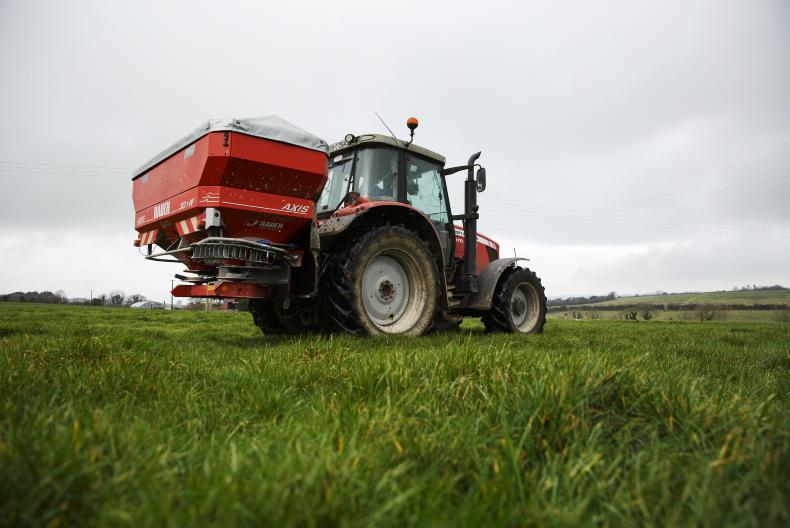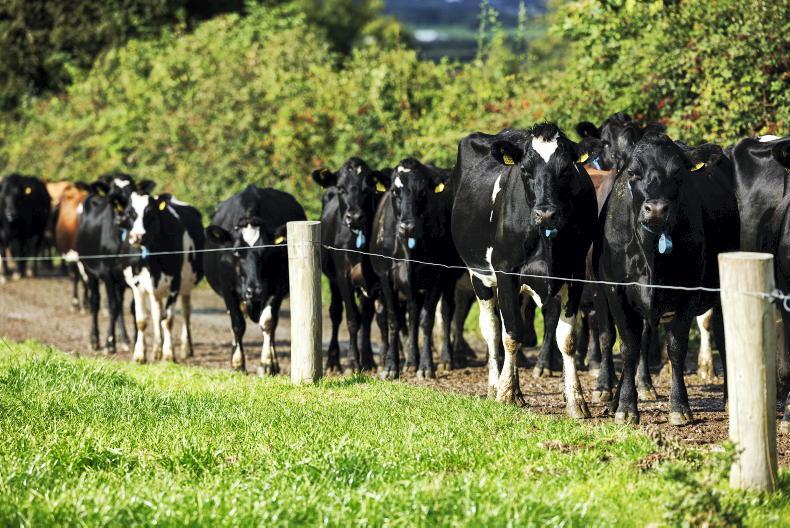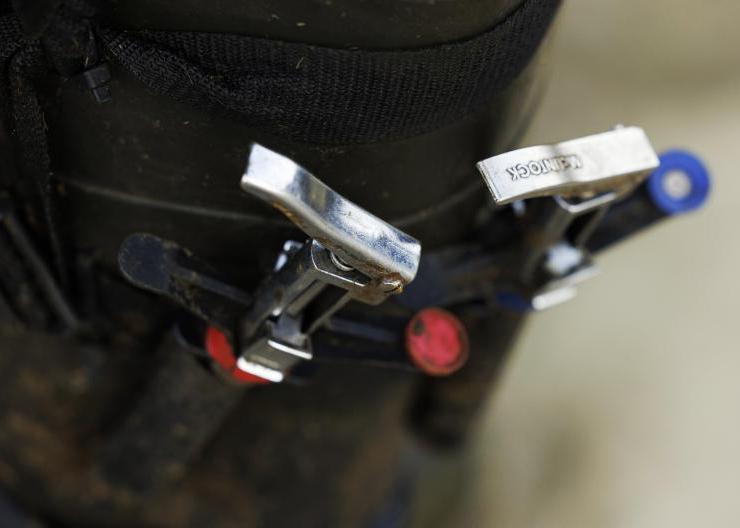Much discussion and debate has centred on the use of protected urea on farms north and south of the border this year. Some farmers have accepted the challenge, but some are slow to change from tried and tested products. There have been some mixed messages on protected urea usage, so we put a series of questions to Teagasc to help clear up any ambiguity.
Teagasc answers compiled by: Patrick Forrestal, David Wall, Mark Plunkett, John Spink, Karl Richards, and Frank O’ Mara.
1 What peer-reviewed research has been carried out using protected urea products?
NBPT has been widely used with urea-based fertilisers for more than two decades. Originally, this was to prevent significant losses of ammonia nitrogen (N) from urea because ammonia-N loss could lead to reduced crop/grass growth response.
Internationally, several hundred papers have been published
If N goes up into the air, then it isn’t there to grow the crop. In recent years, concern about the environmental impact of both greenhouse and ammonia gases has prompted interest in urea treated with NBPT and other urease inhibitors that provide protection to urea.
Internationally, several hundred papers have been published. On the island of Ireland, researchers at Teagasc, Johnstown Castle, and AFBI, Hillsborough, have measured the agronomic performance and gaseous emissions of nitrous oxide (a greenhouse gas) and ammonia of various new nitrogen (N) fertiliser products under Irish conditions.
This work has resulted in a number of research papers, listed in brief; Forrestal 2017, Harty 2017, Forrestal 2016, Harty 2016, Roche 2016, Krol 2020, and Hoekstra 2019.
2 As a result of that research, what products make the Teagasc list?
Products protected with the registered urease inhibitors such as NBPT, NBPT+NPPT, 2-NPT, and for which the weight of scientific evidence shows efficacy reducing ammonia losses from urea, have been published in Table 1.
Currently, there are 18 options including N, N+S and N-K-S available from six Irish fertiliser suppliers. None of these options include phosphorus (P), due to the incompatibility of these urease inhibitors and P during storage, which currently limits the product’s shelf life.
If they are not on the list, then they either haven’t been tested or they have been tested and there is insufficient evidence that they reduce ammonia emissions.
3 Some within the sector suggest that there is a reagent used to bind the NBPT that has well-known detrimental residues – are you aware of this? What has Teagasc done to make the Department aware of the matter?
International data suggests no meaningful risk of NBPT residues in milk under normal conditions on Irish grassland farms.
There are no immediate concerns with the products currently on the Irish market
Additionally, protected urea products are widely used internationally in dairy systems such as New Zealand’s, where protected urea accounts for approximately one-third of the total N market. There are no immediate concerns with the products currently on the Irish market.
4 The inclusion rate of NBPT with urea fertiliser is regulated under EU and Irish fertiliser regulation, which sets minimum and maximum inclusion levels – what are they? What is the degradation rate? When are these inclusion rates measured? What should the levels be when fertiliser arrives on-farm? What measures are in place to monitor these regulations?
The Department of Agriculture carry out market surveillance to ensure that products treated with the registered urease inhibitors NBPT, NBPT+NPPT and 2-NPT meet the EU regulatory minimum inclusion rates (see Table 2).
These minimum inclusion levels must be met at the point where products are placed on the market for sale to farmers.
Degradation rate: depends on a number of factors, including temperature. However, in practical terms, when straight N protected urea (46% N) or correctly formulated N+S blends of protected urea are used in the year of purchase, they should provide the protection needed against N loss.5 What results did the Teagasc farms’ have after using the products?
Teagasc Johnstown Castle has been using protected urea since 2013 and it is now used across all Teagasc farms.
There are also cost savings for the farm, as protected urea is cheaper than CAN per kg/N
There has been no difference in yield performance. However, there have been benefits in terms of reduced workloads when spreading fertiliser, as a greater area of the farm can be spread with a single spreader full, due to the higher N concentration of protected urea. There are also cost savings for the farm, as protected urea is cheaper than CAN per kg/N.
6 Typically, a farmer buying fertiliser with protected urea doesn’t know the level of coating and/or the date of manufacture. What should be done and who is responsible for monitoring and enforcing this?
For protected urea products sold as EC fertilisers, the term “urease inhibitor” should be stated on the bag, along with the type of urease inhibitor used (i.e. NBPT, NBPT+NPPT or 2-NPT). All protected urea products placed on the market needs to meet the regulatory minimum levels. As outlined previously, the DAFM regulate the fertiliser market.
Read more
Protected urea: know what you are buying
Climate plan feedback points to need for nitrogen reduction
BETTER Farm NI: spring calving draws to a close
Much discussion and debate has centred on the use of protected urea on farms north and south of the border this year. Some farmers have accepted the challenge, but some are slow to change from tried and tested products. There have been some mixed messages on protected urea usage, so we put a series of questions to Teagasc to help clear up any ambiguity.
Teagasc answers compiled by: Patrick Forrestal, David Wall, Mark Plunkett, John Spink, Karl Richards, and Frank O’ Mara.
1 What peer-reviewed research has been carried out using protected urea products?
NBPT has been widely used with urea-based fertilisers for more than two decades. Originally, this was to prevent significant losses of ammonia nitrogen (N) from urea because ammonia-N loss could lead to reduced crop/grass growth response.
Internationally, several hundred papers have been published
If N goes up into the air, then it isn’t there to grow the crop. In recent years, concern about the environmental impact of both greenhouse and ammonia gases has prompted interest in urea treated with NBPT and other urease inhibitors that provide protection to urea.
Internationally, several hundred papers have been published. On the island of Ireland, researchers at Teagasc, Johnstown Castle, and AFBI, Hillsborough, have measured the agronomic performance and gaseous emissions of nitrous oxide (a greenhouse gas) and ammonia of various new nitrogen (N) fertiliser products under Irish conditions.
This work has resulted in a number of research papers, listed in brief; Forrestal 2017, Harty 2017, Forrestal 2016, Harty 2016, Roche 2016, Krol 2020, and Hoekstra 2019.
2 As a result of that research, what products make the Teagasc list?
Products protected with the registered urease inhibitors such as NBPT, NBPT+NPPT, 2-NPT, and for which the weight of scientific evidence shows efficacy reducing ammonia losses from urea, have been published in Table 1.
Currently, there are 18 options including N, N+S and N-K-S available from six Irish fertiliser suppliers. None of these options include phosphorus (P), due to the incompatibility of these urease inhibitors and P during storage, which currently limits the product’s shelf life.
If they are not on the list, then they either haven’t been tested or they have been tested and there is insufficient evidence that they reduce ammonia emissions.
3 Some within the sector suggest that there is a reagent used to bind the NBPT that has well-known detrimental residues – are you aware of this? What has Teagasc done to make the Department aware of the matter?
International data suggests no meaningful risk of NBPT residues in milk under normal conditions on Irish grassland farms.
There are no immediate concerns with the products currently on the Irish market
Additionally, protected urea products are widely used internationally in dairy systems such as New Zealand’s, where protected urea accounts for approximately one-third of the total N market. There are no immediate concerns with the products currently on the Irish market.
4 The inclusion rate of NBPT with urea fertiliser is regulated under EU and Irish fertiliser regulation, which sets minimum and maximum inclusion levels – what are they? What is the degradation rate? When are these inclusion rates measured? What should the levels be when fertiliser arrives on-farm? What measures are in place to monitor these regulations?
The Department of Agriculture carry out market surveillance to ensure that products treated with the registered urease inhibitors NBPT, NBPT+NPPT and 2-NPT meet the EU regulatory minimum inclusion rates (see Table 2).
These minimum inclusion levels must be met at the point where products are placed on the market for sale to farmers.
Degradation rate: depends on a number of factors, including temperature. However, in practical terms, when straight N protected urea (46% N) or correctly formulated N+S blends of protected urea are used in the year of purchase, they should provide the protection needed against N loss.5 What results did the Teagasc farms’ have after using the products?
Teagasc Johnstown Castle has been using protected urea since 2013 and it is now used across all Teagasc farms.
There are also cost savings for the farm, as protected urea is cheaper than CAN per kg/N
There has been no difference in yield performance. However, there have been benefits in terms of reduced workloads when spreading fertiliser, as a greater area of the farm can be spread with a single spreader full, due to the higher N concentration of protected urea. There are also cost savings for the farm, as protected urea is cheaper than CAN per kg/N.
6 Typically, a farmer buying fertiliser with protected urea doesn’t know the level of coating and/or the date of manufacture. What should be done and who is responsible for monitoring and enforcing this?
For protected urea products sold as EC fertilisers, the term “urease inhibitor” should be stated on the bag, along with the type of urease inhibitor used (i.e. NBPT, NBPT+NPPT or 2-NPT). All protected urea products placed on the market needs to meet the regulatory minimum levels. As outlined previously, the DAFM regulate the fertiliser market.
Read more
Protected urea: know what you are buying
Climate plan feedback points to need for nitrogen reduction
BETTER Farm NI: spring calving draws to a close










SHARING OPTIONS